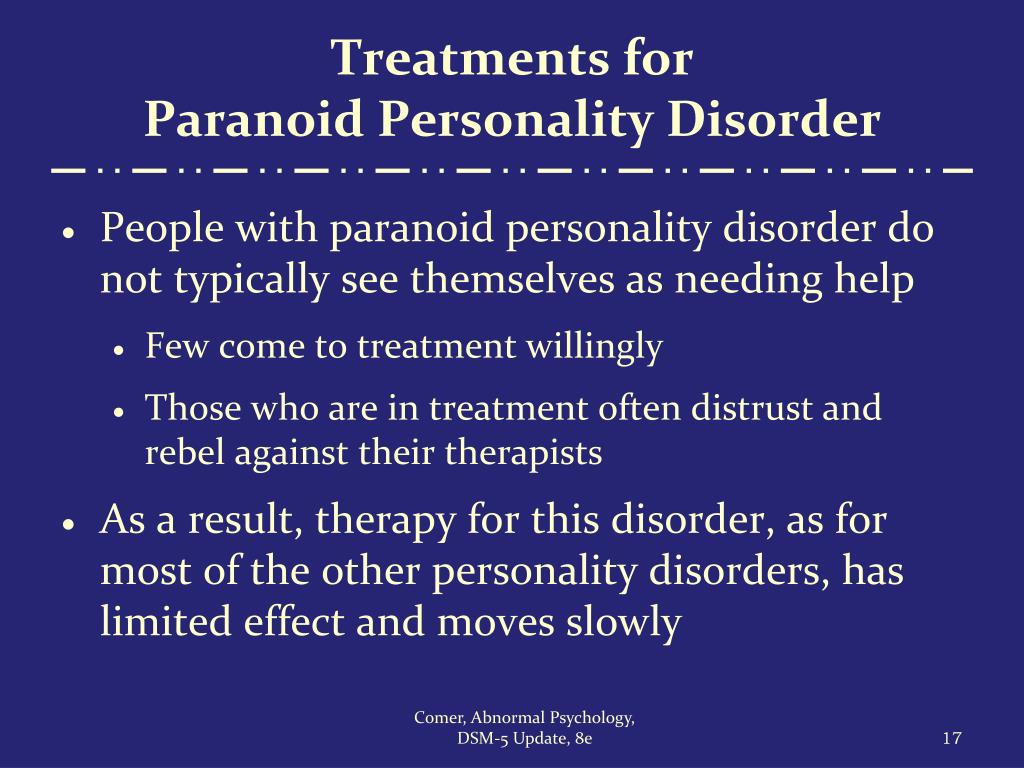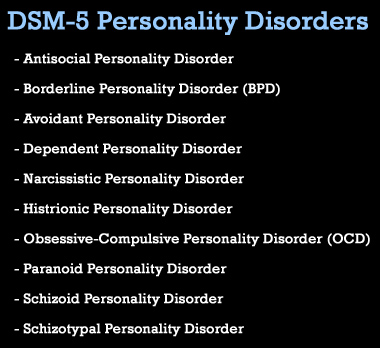
#PARANOID PERSONALITY DISORDER DSM 5 MANUAL#
Diagnostic and statistical manual of mental disorders (5th ed.). Washington, DC: Author.Īmerican Psychiatric Association. Diagnostic and statistical manual of mental disorders (3rd ed.). Journal of Psychiatric Research, 45(6), 814–822.Īmerican Psychiatric Association. Childhood adversity and personality disorders: Results from a nationally representative population-based study. O., Mather, A., Boman, J., Fleisher, W., Enns, M.


The Borderline pattern qualifier may be applied to individuals whose pattern of personality disturbance is characterized by a pervasive pattern of instability of interpersonal relationships, self-image, and affects, and marked impulsivity, as indicated by five (or more) of the following:

Includes: explosive and aggressive personality (disorder) Excludes: dissocial personality disorder Outbursts of violence or threatening behaviour are common, particularly in response to criticism by others.The predominant characteristics are emotional instability and lack of impulse control.Two variants of this personality disorder are specified, and both share this general theme of impulsiveness and lack of self-control. The ability to plan ahead may be minimal, and outbursts of intense anger may often lead to violence or “behavioural explosions” these are easily precipitated when impulsive acts are criticized or thwarted by others.

A personality disorder in which there is a marked tendency to act impulsively without consideration of the consequences, together with affective instability.This category should ONLY be used in combination with a Personality disorder category (Mild, Moderate, or Severe) or Personality difficulty. ICD-11 DIAGNOSTIC CRITERIA FOR BORDERLINE PATTERN OF PERSONALITY DISORDER OR PERSONALITY DIFFICULTY


 0 kommentar(er)
0 kommentar(er)
